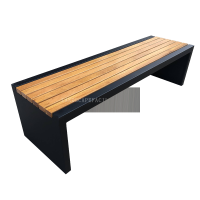Welcome to the website for landscape facilities products and knowledge.
How does the Landscape Round Table address the need for flexibility in fast-growing or changing organizations?
In today's rapidly evolving business ecosystem, organizations face the constant challenge of maintaining agility while scaling operations. The Landscape Round Table emerges as a transformative approach that addresses this fundamental need for flexibility through its unique structural and philosophical framework. Unlike traditional hierarchical models that often create decision-making bottlenecks, this methodology establishes cross-functional councils comprising representatives from various organizational levels and departments.
The core strength of the Landscape Round Table lies in its decentralized authority structure. By distributing decision-making capabilities across multiple specialized tables—each focusing on specific operational domains such as innovation, customer experience, or operational efficiency—organizations can respond to market shifts with remarkable speed. These tables function as semi-autonomous units that maintain strategic alignment through regular synchronization meetings, ensuring cohesive progress without sacrificing responsiveness.
For fast-growing enterprises, this model provides the scaffolding necessary to scale without rigidity. New teams and departments can be integrated by simply establishing additional tables, while the overarching coordination mechanism prevents fragmentation. The continuous feedback loops embedded within the round table discussions enable real-time strategy adjustments, transforming potential disruptions into opportunities for refinement.
The architecture of these tables deliberately incorporates rotating membership, preventing the formation of fixed perspectives that often hinder organizational adaptability. This rotation not only brings fresh insights to each challenge but also facilitates organic knowledge transfer across the organization. Furthermore, the inclusive nature of these discussions surfaces ground-level intelligence that might otherwise remain siloed, enabling more nuanced and context-aware decisions.
Implementation typically begins with identifying critical organizational domains that require dynamic oversight, followed by establishing clear mandates for each table while preserving autonomy within defined boundaries. Successful adoption requires cultivating a culture of trust and transparent communication, where participants feel empowered to voice concerns and propose unconventional solutions without fear of hierarchical repercussions.
The Landscape Round Table particularly excels in environments characterized by technological disruption or market volatility. Its inherent flexibility allows organizations to pivot resources and priorities without the protracted reorganization processes that plague traditional structures. By institutionalizing adaptability into its very operating system, an organization can transform change from a threat into its most powerful competitive advantage.
This approach represents more than just a meeting format—it constitutes a fundamental reimagining of how organizations can structure themselves to thrive amid uncertainty. The Landscape Round Table doesn't merely accommodate change; it builds organizational muscles that actively leverage turbulence for growth and innovation, creating enterprises that are not just resilient but genuinely anti-fragile.
Related search:

Recommendation
Modern Stainless Steel Begonia Wood Park Chair Outdoor Courtyard Leisure Sun Protection Bench Long Seat